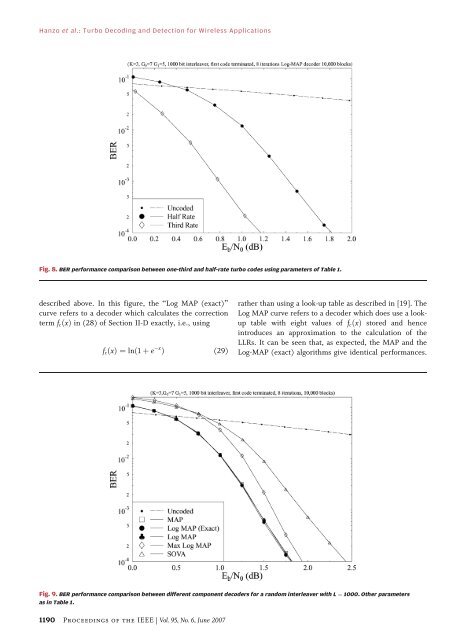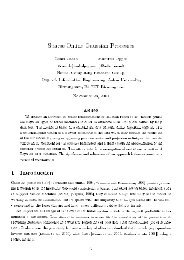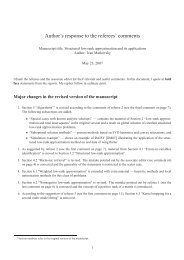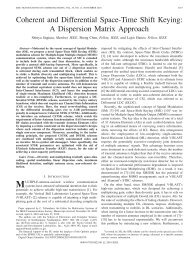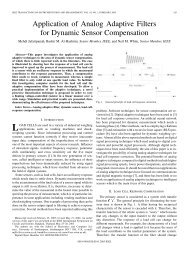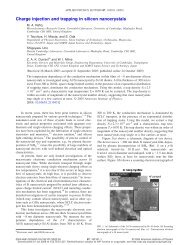Turbo Decoding and Detection for Wireless Applications
Turbo Decoding and Detection for Wireless Applications
Turbo Decoding and Detection for Wireless Applications
You also want an ePaper? Increase the reach of your titles
YUMPU automatically turns print PDFs into web optimized ePapers that Google loves.
Hanzo et al.: <strong>Turbo</strong> <strong>Decoding</strong> <strong>and</strong> <strong>Detection</strong> <strong>for</strong> <strong>Wireless</strong> <strong>Applications</strong><br />
Fig. 8. BER per<strong>for</strong>mance comparison between one-third <strong>and</strong> half-rate turbo codes using parameters of Table 1.<br />
described above. In this figure, the BLog MAP (exact)[<br />
curve refers to a decoder which calculates the correction<br />
term fcðxÞ in (28) of Section II-D exactly, i.e., using<br />
fcðxÞ ¼lnð1 þ e x Þ (29)<br />
rather than using a look-up table as described in [19]. The<br />
Log MAP curve refers to a decoder which does use a lookup<br />
table with eight values of fcðxÞ stored <strong>and</strong> hence<br />
introduces an approximation to the calculation of the<br />
LLRs. It can be seen that, as expected, the MAP <strong>and</strong> the<br />
Log-MAP (exact) algorithms give identical per<strong>for</strong>mances.<br />
Fig. 9. BER per<strong>for</strong>mance comparison between different component decoders <strong>for</strong> a r<strong>and</strong>om interleaver with L ¼ 1000. Other parameters<br />
as in Table 1.<br />
1190 Proceedings of the IEEE |Vol.95,No.6,June2007


